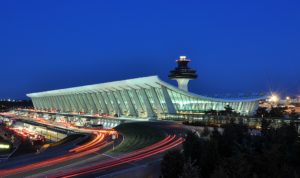
In a guest post published on DRONELIFE last month, Airspace Systems CEO Jaz Banga discussed the FAA’s recent letter to airport authorities, notifying them that airspace security systems could not be implemented without prior approval from the FAA. This week, the FAA clarified their position and provided more information for airport authorities. As DRONELIFE pointed out yesterday, attempting to chase down a drone with a military helicopter as authorities did in Frankfurt is problematic: other misguided attempts at drone mitigation – like trying to shoot down or otherwise disrupt a drone – may be illegal here in the U.S. As the technologies and regulations develop in sync, FAA is working quickly to ensure that all of the stakeholders are communicating.
Susan Friedberg at airspace security firm Dedrone did a great job of outlining the takeaways (check out Dedrone’s log of drone incidents, it’s enlightening.)
-
The FAA does not support the use of countermeasures at airports whatsoever.
-
Airports can move forward with testing and procurement of UAS detection technology.
-
The FAA requests airports coordinate with them prior to installation/deployment so they can provide technical assistance regarding regulatory and grant assurance compliance.
-
The FAA provides name and contact information for airports with questions about UAS demonstrations, evaluations, installations, or deployments at airports.
“Drone activity data, whether collected through anecdotal evidence from a pilot in the air, or from drone detection technology, must be available to airports in order to safely operate and defend themselves against all drone intrusions,” says Friedberg. “In order to support the safe integration of UAS detection systems into the airport environment, the FAA will continue to refine the processes and procedures for safe UAS detection system use.”
“…The latest guidance shows the FAA is acting on the known concerns of drones at airports, but there is still much to be decided in terms of who is responsible from the federal, state and local level for creating and implementing airport drone detection programs. The door is open for airports to enquire about how to create their own drone detection programs, but in the meantime, the FAA must move quickly to adopt formal drone detection technology standards for US airports.”
Airspace security firms, the FAA, and airport authorities are all working to get working systems in place – but they are in a race against time and bad actors who may take advantage of the gap to do more damage to air traffic, and the drone industry.

Miriam McNabb is the Editor-in-Chief of DRONELIFE and CEO of JobForDrones, a professional drone services marketplace, and a fascinated observer of the emerging drone industry and the regulatory environment for drones. Miriam has penned over 3,000 articles focused on the commercial drone space and is an international speaker and recognized figure in the industry. Miriam has a degree from the University of Chicago and over 20 years of experience in high tech sales and marketing for new technologies.
For drone industry consulting or writing, Email Miriam.
TWITTER:@spaldingbarker
Subscribe to DroneLife here.